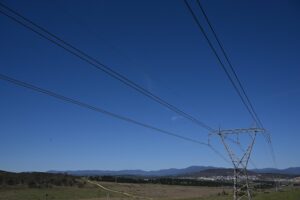The federal government’s efforts to curb greenhouse gas emissions from new and existing power plants may be pitting utilities that rely on coal-fired power plants against those that don’t.
Speaking Tuesday at the Bloomberg New Energy Finance Future of Energy Summit in New York City, several representatives of the electric power industry and an environmental consultant said the U.S. Environmental Protection Agency’s pending rules are injecting significant uncertainty into their ability to plan for the future, but they disputed the value of the new rules.
The EPA is planning to regulate power plant greenhouse gas emissions with two separate rules as part of the Obama administration’sClimate Action Plan. A proposed rule that would govern emissions from yet-to-be-built power plants was released last year. A proposed rule that would regulate emissions from existing power plants, mainly those fueled with coal, is expected to be released in early June.
The proposed standards for new power plants aim to require coal plants to use carbon capture and storage technology to help them cap carbon emissions at 1,100 pounds of carbon dioxide per megawatt hour. The cap for new natural gas power plants would be 1,000 pounds of carbon dioxide per megawatt hour.
The standards will constitute U.S. policy on regulating emissions to curb climate change, and the rule governing existing power plants will give each state latitude in how to require them to reduce carbon emissions, said Katherine Hamilton, founder of 38 North Solutions, a clean energy policy consulting firm in Washington, D.C.
Utilities say the new standards mean coal power may be a thing of the past.
In the future, “coal plants are pretty much off the table,” said Jack Ihle, director of environmental policy for Xcel Energy, a major Midwestern power utility. “In terms of knowing what to plan for existing sources, we don’t know until we know more about that rule.”
He said Xcel does not believe that having the EPA “look over the shoulder of all the states’ clean energy policies” is a good role for the agency.
However, Yvonne McIntyre, vice president of government affairs for Texas-based utility Calpine Corp., said her company welcomes new EPA greenhouse gas emissions regulations because her company is already fairly clean, using only natural gas, solar and geothermal power generation.
Roger Martella, a lawyer who represents power companies, said part of utilities’ legal strategy is to challenge the new regulations and start looking for their legal vulnerabilities right away.
“The EPA has been very strategic in how it has laid out all these rules to avoid litigation,” Martella said. “They’re very carefully written to put EPA in the strongest possible position from a litigation standpoint. Once finalized, this new source rule will be challenged.”
If the rule governing new power plants is successfully challenged in court, the rule regulating emissions from existing plants should be halted immediately, he said.
There’s an upside to the new rules, McIntyre said.
“It’s going to cause some retirements in fossil (fuel) generation,” she said. “It’s a greater incentive to put cleaner resources out there.”
Bloomberg’s Future of Energy Summit started Monday and continues through Wednesday in New York, with discussions focusing on new renewable and traditional energy technologies and their role in a changing climate.
Source: Climate Central. Reproduced with permission.









